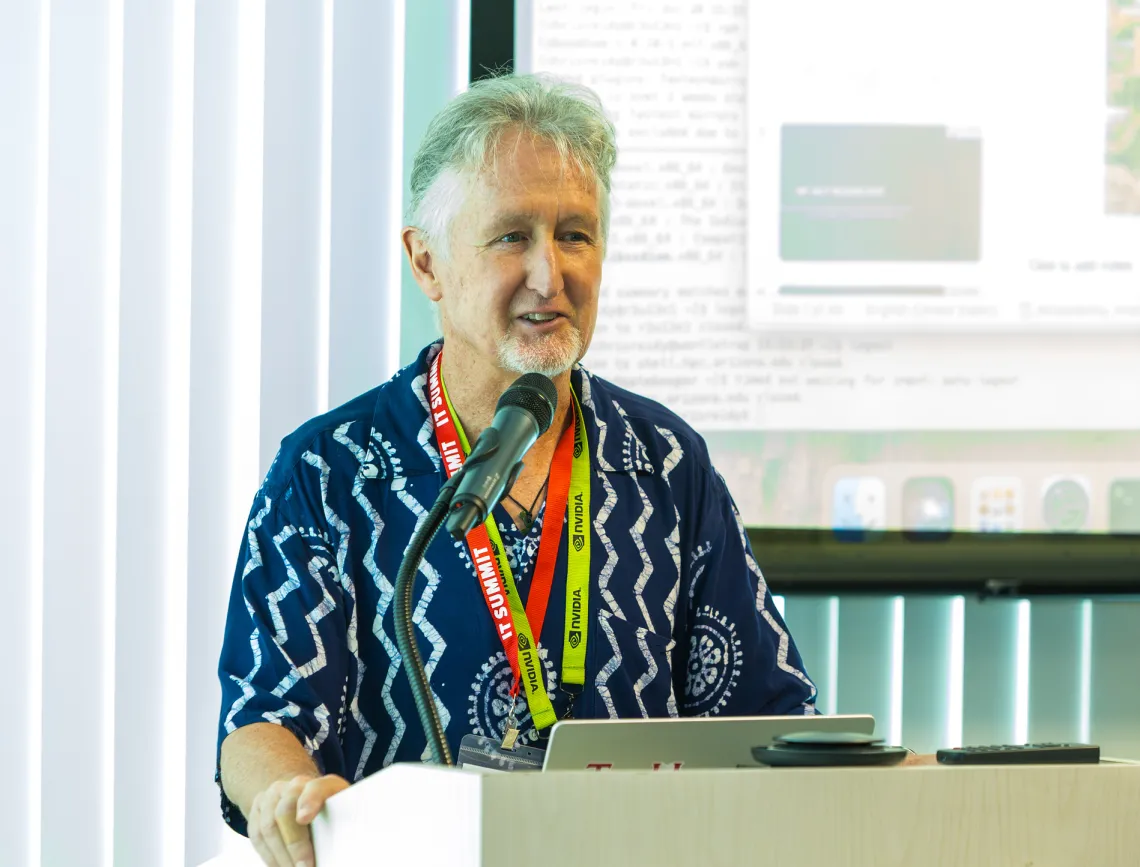High Performance Computing for Research
The three “cats” that provide high performance computing for researchers at the university are each more than three years old and are very busy.

The three supercomputers are Puma, Ocelote and El Gato, said Chris Reidy, Research Facilitation Manager, Research and Discovery Technologies. Reidy described the offerings and power of our feline-named supercomputers housed in a secure and temperature-controlled room at the Computer Center, and talked about the future of HPC during the recent IT Summit.
“Imagine having 7,500 laptops all stacked up, rows and columns. And they are all working together, all efficient and all working 24-hours, seven-days a week producing scientific research and data.” Reidy said. “Each of the computer nodes isn’t super-fantastic. But together as a system it produces an incredible amount of compute capacity.”
Reidy also showed there are more principal investigators using HPC and the wide variety of applications that are run through the supercomputers. He also noted in his presentation that there is a round of training available around machine learning, HPC and other workshops. To demonstrate the impact of what is provided to researchers on campus, Reidy said each principal investigator has 100,000 CPU hours per month on Puma, and there are about 290 active PIs per month. If all that research activity was done on Amazon’s similar service, it would cost about $1,450,000 a month.
Here’s Reidy’s complete presentation from the IT Summit. And you can more from Research and Discovery Technologies on their homepage.

